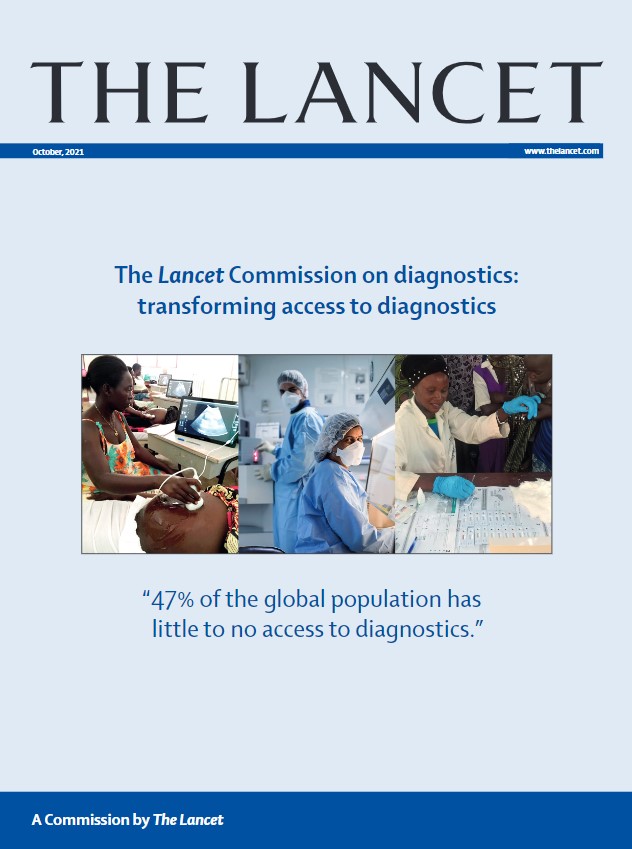The Lancet Commission on Diagnostics
Video Subtitles available in: Spanish, French, Mandarin
About the Commission
Diagnostics are an essential part of a well functioning and high-quality health system. Yet, almost half of the global population has little or no access to diagnostics.
The COVID-19 pandemic has shown acutely that diagnostic capacity in a country is directly linked to the ability to respond to the pandemic with appropriate public health measures and to monitor emerging variants. There is an urgent need to strengthen diagnostics for future pandemic preparedness but also beyond pandemics. Diagnostics are central to an accurate diagnosis of communicable and non-communicable diseases, to guide therapy, monitor progress, and assess response to treatment.
The Commission puts forward recommendations to accelerate and transform access to diagnostics globally.
Read the Report Here
The Executive Summary and Key Recommendations are also available in Spanish and French.
Key Messages
1. 47% of the global population has little to no access to diagnostics.
2. Diagnostics are central and fundamental to quality health care. This notion is under-recognised, leading to underfunding and inadequate resources at all levels.
3. The level of primary health care is the diagnostic so-called last mile and particularly affects poor, rural, and marginalised communities globally; appropriate access is essential for equity and social justice.
4. The COVID-19 pandemic has emphasised the crucial role of diagnostics in health care and that without access to diagnostics, delivery of universal health coverage, antimicrobial resistance mitigation, and pandemic preparedness cannot be achieved.
5. Innovations within the past 15 years in many areas (eg, in financing, technology, and workforce) can reduce the diagnostic gap, improve access, and democratise diagnostics to empower patients.
6. As an example of the potential impact, 1·1 million premature deaths in low-income and middle-income countries could be avoided annually by reducing the diagnostic gap for six priority conditions: diabetes, hypertension, HIV, and tuberculosis in the overall population, and hepatitis B virus infection and syphilis for pregnant women.
7. The economic case for such investment is strong. The median benefit–cost exceeds one for five of the six priority conditions in middle-income countries, and exceeds one for four of the six priority conditions in low-income countries, with a range of 1·4:1 to 24:1.


